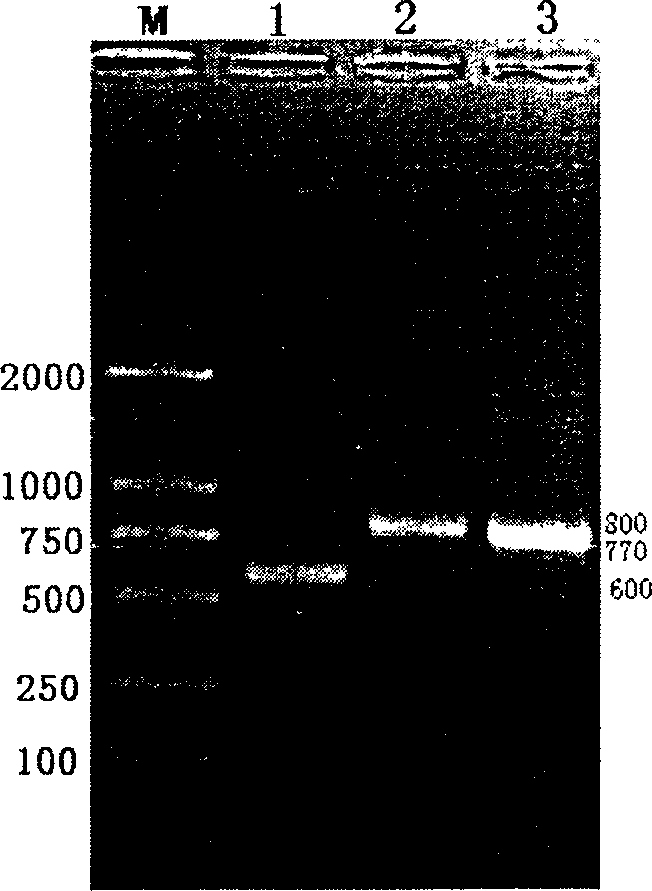Alocasia odora agglutinin protein gene and its application
A lectin and gene technology, applied in the application, genetic engineering, plant genetic improvement and other directions, can solve the problem of no alocasia lectin protein gene cloning and other problems, and achieve the effect of reducing the application
- Summary
- Abstract
- Description
- Claims
- Application Information
AI Technical Summary
Problems solved by technology
Method used
Image
Examples
Embodiment
[0052] 1. Cloning of the 3' end sequence of Alocasia lectin protein gene (AML)
[0053] The present invention uses RACE PCR to clone the 3' end sequence of the AML gene. First search Genbank and related literature, search for the nucleotide sequences and amino acid sequences of five lectins or similar proteins of other three plants under the family Araceae, which are closely related to the calla lily, and arrange and analyze the five to find out the The highly conserved three-segment region is used to design the gene-specific primers (GSP) necessary for 3'RACE PCR, and then perform 3'RACE PCR amplification to obtain the 3'-end sequence fragment, and then directly combine the PCR product with pMP 18-T vector The vectors are connected, transformed into E. coli competent cells, and the recombinant plasmids are screened for resistance through the LB plate containing AMP. A single colony is selected from the plate and cultured in shake flasks. The two enzymes used are E10RI and Hi...
PUM
 Login to View More
Login to View More Abstract
Description
Claims
Application Information
 Login to View More
Login to View More - R&D
- Intellectual Property
- Life Sciences
- Materials
- Tech Scout
- Unparalleled Data Quality
- Higher Quality Content
- 60% Fewer Hallucinations
Browse by: Latest US Patents, China's latest patents, Technical Efficacy Thesaurus, Application Domain, Technology Topic, Popular Technical Reports.
© 2025 PatSnap. All rights reserved.Legal|Privacy policy|Modern Slavery Act Transparency Statement|Sitemap|About US| Contact US: help@patsnap.com



